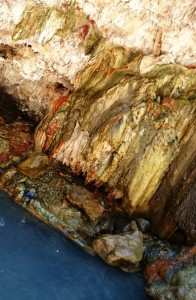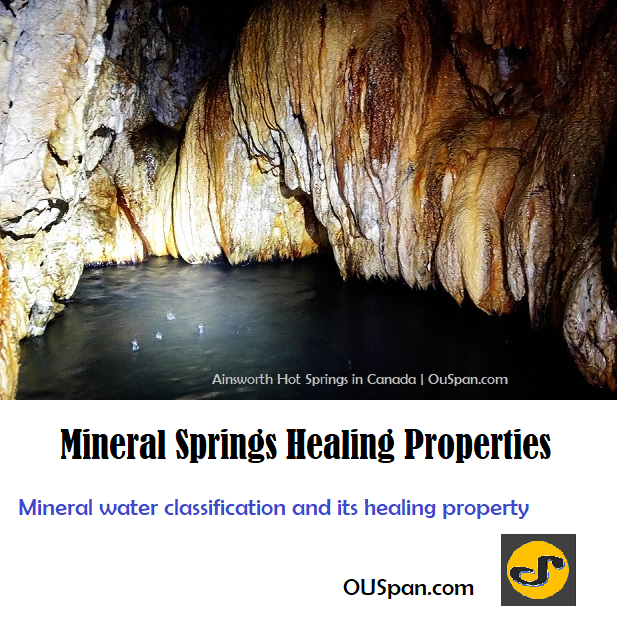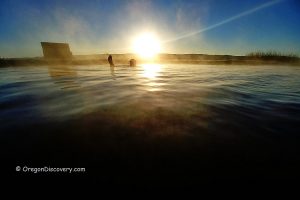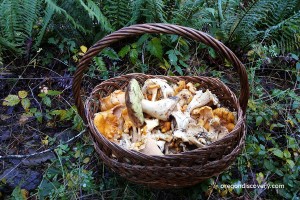
The use of hot springs is nothing new since people have been on the Earth, they have been soaking in mineral-rich hot waters. We don't know how much our ancestors truly knew about the benefits of hot mineral water, but today we are very well aware of a long list of positives it offers.
History
Hot springs have been used for thousands of years. The ancient Greeks, Phoenicians, Hebrews, and Egyptians made special pools for bathing both communally and privately. Hot springs water has been used for healing purposes as well as in religious ceremonies.
The ancient Romans built private baths and public "Thermae" with a capacity as high as thousands of people. Multiple ancient civilizations believed in the healing powers of mineral geothermal water.

Balneotherapy, or medical bathing, is part of medical treatment or preventive care widely used at modern Japanese and European mineral hot springs resorts. In the U.S. mineral hot springs are mostly used for recreation and relaxation.
Hot Springs Health Benefits
 Because of the unique nature of different hot springs, the exact mineral content of each one will vary to some degrees. Regardless of the differences, most Oregon hot springs contain over 13 different minerals: sulfur, silica, calcium, sodium, bicarbonate, boron, magnesium, selenium, potassium, bromine, fluorine, lithium, and iron.
Because of the unique nature of different hot springs, the exact mineral content of each one will vary to some degrees. Regardless of the differences, most Oregon hot springs contain over 13 different minerals: sulfur, silica, calcium, sodium, bicarbonate, boron, magnesium, selenium, potassium, bromine, fluorine, lithium, and iron.
Each of these minerals can have a direct effect on our health and well-being. Each mineral in hot springs has some function in the human body, some more essential than others. The human body can absorb these minerals in trace amounts through skin.
Minerals in the water are not the only benefit of hot springs. The heat itself can provide a positive effect on the body, especially in combination with a variety of minerals it has. The increase in body temperature causes an improving blood circulation helping to optimize body functions and overall rejuvenation. For example, improved circulation helps relieve the pain that is associated with muscle and joint problems.
A nice long soak in hot springs can also help you get a good night’s sleep. The process of raising your body temperature and then the rapid cooling causes a deeper, more restful night’s sleep.
Hot Springs Safety
Now once we have established that hot springs can be very therapeutic, it is important to know how to use them for the maximum benefit. Many non-commercial hot springs are good for soaking only. While they do contain many of the essential minerals that our body needs, it is risky to ingest the water from the hot springs. It can contain pollutants, bacteria, and heavy metals.
Soaking in the hot mineral water is relaxing and enjoyable. However, you should be aware of possible adverse effects and follow precautions for the risk-free thermal bathing.
- Pregnant women should not use hot springs unless approved by a doctor.
- Individuals with cardiovascular problems, diabetes, low or high blood pressure should consult the doctor before getting into the hot water
- Do not soak under the influence of alcohol or drugs
- Do not drink water from the hot springs if it has not been tested
- Keep your head above water
- Avoid overheating
- Stay hydrated - drink plenty water or non-alcoholic and caffeine-free beverages.
Hot Springs Health Benefits
- Skin, hair, and nail revitalization
- Improvement of skin conditions such as eczema, psoriasis, acne, and hives
- Digestion improvement
- Detoxification
- Stress relief
- Calming effects on mind and body
- Immune system strengthening
- Sleep improvement
- Blood circulation improvement
- Muscle relaxing effects
- Injury rehabilitation after accidents
- Joint and muscle pain relief
- Osteoporosis, rheumatism, and arthritis pain relief
Hot Springs Risks
Temperature
Some hot springs like Austin Hot Springs can suddenly expose you to scalding water. Extremely hot temperature can be enough to cause the second- or even third-degree burns. Always, test the water before getting into it.
Too much time in the hot water and the body temperature can rise to dangerous levels or cause your body to become dehydrated.
Note. Children will overheat more quickly than adults.
Do not bath in the hot water if you are pregnant. Prolonged bathing in hot water, hot tub, or sauna can cause neural tube defects (brain and spinal cord damage) in the baby and and even lead to miscarriage.
Soaking in hot water of mineral springs causes a rise in heart rate. Rapid heart rate rise might lead to a drastic drop in blood pressure shocking the body and this can lead to lightheadedness, fainting, and even cardiac arrest. People with cardiovascular disorders should seek medical advice before entering into hot springs waters.
Sulfur
Hydrogen sulfide in a high concentration has toxic effects and can be fatal due to the blocking of cellular respiratory enzymes causing cell anoxia and cell damage. Do not bathe in unknown wild hot springs, particularly, if it smells like "rotten eggs".
Sulfur can also trigger an allergic reaction in some people.
Naegleria fowleri ameba
Naegleria fowleri is found in bodies of water including rivers, lakes, hot springs, as well as in poorly maintained swimming pools. Infections can occur even from contaminated tap water when it is inhaled into sinuses.
Never lower the head into the water as an ameba can enter into the system via the nose and destroys the brain tissue. This condition is known as primary amebic meningoencephalitis or naegleriasis which is a potentially lethal brain infection.
Hot Springs Red Spider Mites
Another risk you might face when visiting wild hot springs is red spider mites. Hardly visible, the red spider mites live around hot springs and on the surface of the water. These spiders look for new areas to hatch their eggs and thus cling to towels, clothes, and skin.
The immune system will generally neutralize any mild toxicity that spiders inject into the body. Skin rash and intense itching will stay for a couple of weeks. Do not scratch the skin and use anti-itch cream.
Fortunately, only a few hot springs in Oregon was reported to have red spider mites. Those hot springs are Bog Hot Springs, South Harney Lake Hot Springs, and Hart Mountain Hot Springs.
Conclusion
All warnings listed above are not intended to scare you away from visiting hot springs, but rather to inform you about possible risks.
If you have never experienced hot springs' health benefits, now is the time to do so. However, always use common sense when bathing in the geothermal water.
You May Also Like
Daldal et al. Hydrogen sulfide toxicity in a thermal spring: a fatal outcome. NCBI. 2010.
OuSpan.com





